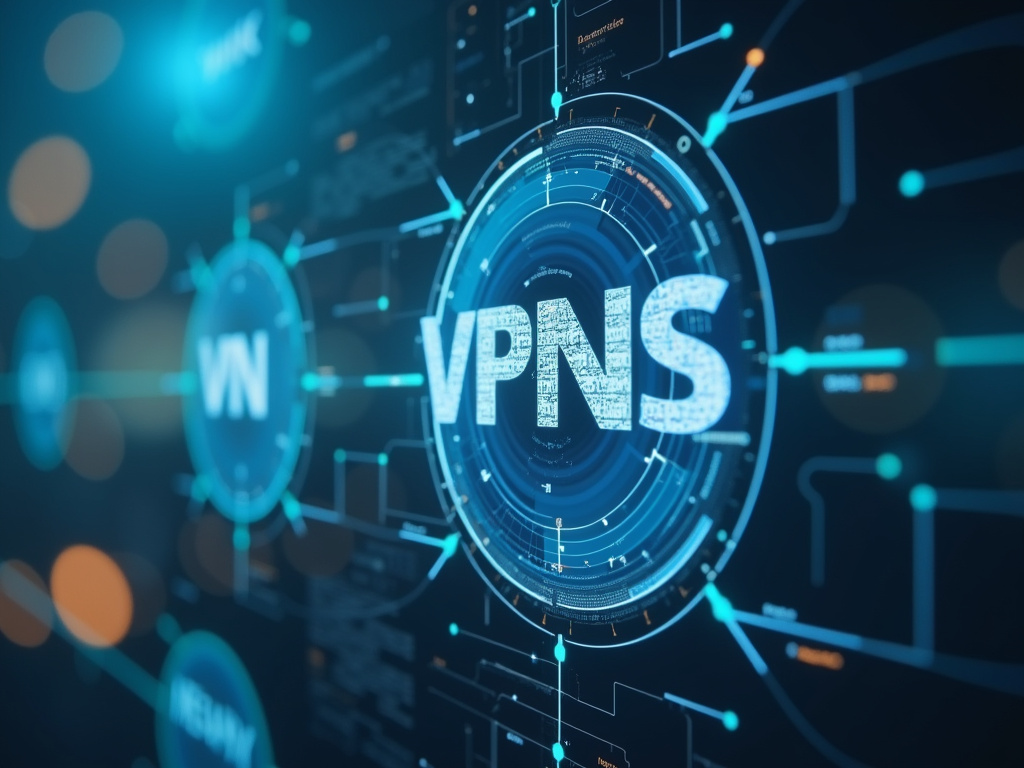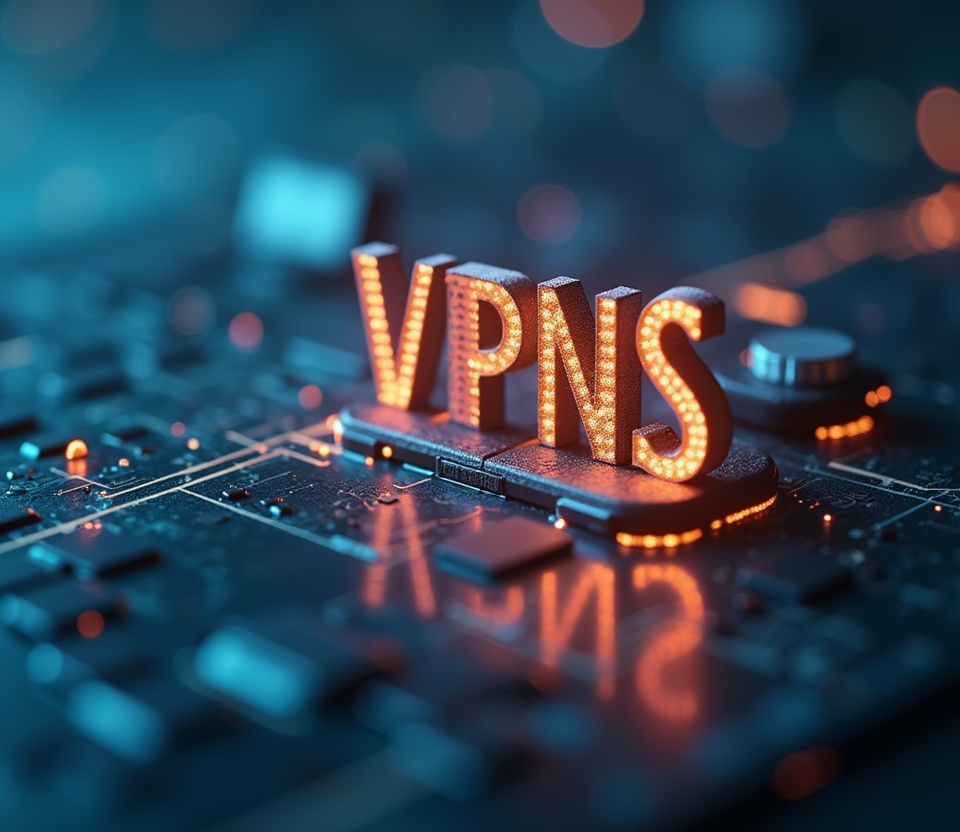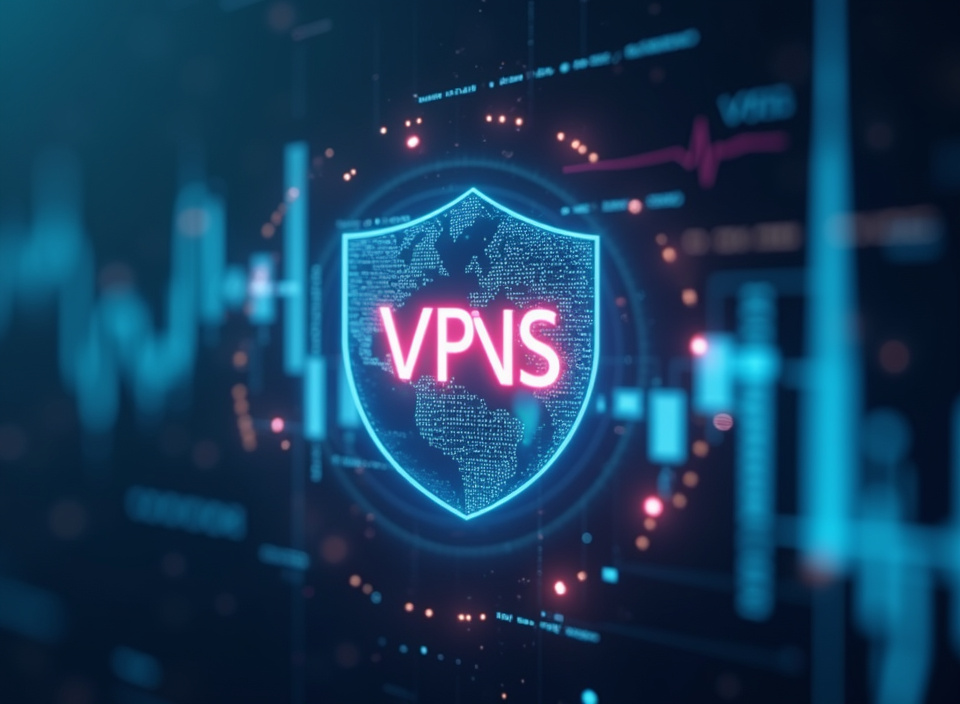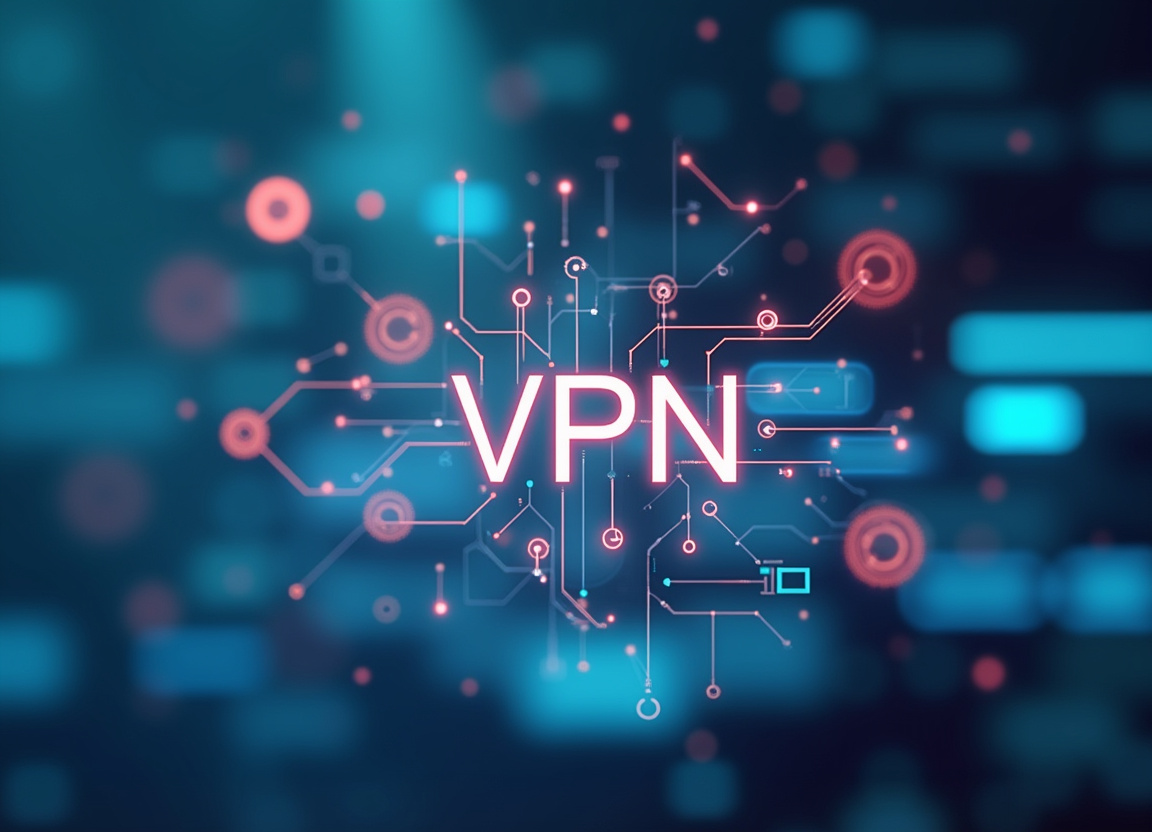VPNs for Public Health Initiatives: Protecting Outreach Data

Table of Contents
Securing Public Health Outreach: The VPN Imperative
In an age defined by digital interconnectedness, the sanctity of data is paramount, especially within the sphere of public health. Initiatives aimed at improving community well-being, conducting epidemiological research, and delivering vital healthcare services are increasingly reliant on the secure and efficient handling of sensitive information. This article delves into the critical role Virtual Private Networks (VPNs) play in ensuring *outreach data security* and maintaining *operational integrity* within these vital public health endeavors.
We explore how the strategic implementation of a *public health VPN* infrastructure is no longer a mere technological upgrade, but a fundamental requirement for safeguarding *information protection* and fostering public trust. As healthcare professionals and organizations navigate the complexities of data privacy regulations and strive to protect the confidentiality of vulnerable populations, VPNs emerge as a powerful ally, providing a robust layer of security that enables the ethical and effective implementation of critical health programs. Imagine a scenario where a team of public health workers is conducting outreach in a remote community, collecting data on disease prevalence and vaccination rates.
Without a secure connection, this sensitive information could be intercepted by malicious actors, potentially exposing individuals to discrimination, identity theft, or other forms of harm. A *VPN for healthcare* professionals involved in such outreach ensures that the data transmitted is encrypted and protected, even when accessed from unsecured networks. This seemingly simple act of implementing a VPN can have a profound impact on the lives of individuals and the success of public health initiatives.
The proliferation of telehealth services further underscores the need for robust data security measures. As more patients access healthcare remotely, the volume of sensitive medical information transmitted electronically is growing exponentially. VPNs provide a secure tunnel for this data to travel, protecting it from eavesdropping and tampering.
This is particularly important for patients in underserved communities who may rely on public Wi-Fi networks to access telehealth services which could put private information at stake. Beyond data transmission, VPNs also play a crucial role in securing access to cloud-based resources. Many public health organizations are now leveraging the cloud to store and analyze data, collaborate on research projects, and deliver services to the public.
VPNs ensure that these cloud environments are protected from unauthorized access, mitigating the risk of data breaches and maintaining the confidentiality of sensitive information. The challenge lies not only in implementing VPN technology but also in ensuring that users understand how to use it effectively. Training programs are essential to educate healthcare professionals and outreach workers about best practices for data security and privacy, emphasizing the importance of protecting sensitive information and adhering to established protocols.
The success of any *public health VPN* strategy hinges on a holistic approach that combines technology, policy, and education. By prioritizing security from the outset, public health organizations can minimize the risk of data breaches, maintain the integrity of their operations, and foster stronger relationships with the communities they serve. In an era where data breaches are becoming increasingly common, the cost of neglecting data security can be catastrophic.
A single breach can erode public trust, damage an organization's reputation, and expose vulnerable individuals to significant harm. By investing in VPN technology and implementing robust data security practices, public health organizations can demonstrate their commitment to protecting privacy and upholding the highest ethical standards. This commitment is essential for ensuring the long-term success of public health initiatives and building a healthier, more equitable future for all.
In the modern age, the privacy of sensitive information is a focal point of the public conscience, and the protection of data should be a primary goal of any healthcare organization.
VPNs for Public Health: A Shield for Sensitive Data
Implementing a robust *public health VPN* solution involves a multi-faceted approach that begins with a comprehensive risk assessment. This assessment should identify potential vulnerabilities in the existing infrastructure, the types of data being collected, and the various access points used by outreach workers. Consider a scenario where outreach workers use a variety of devices, some personal and some provided by the organization, to access and transmit data.
A risk assessment would identify the security vulnerabilities associated with each device type, including the potential for malware infections, data leakage through unsecured apps, and weak password practices. Based on this analysis, organizations can select a VPN protocol that aligns with their specific security needs, considering factors such as encryption strength, speed, and compatibility with existing systems. Several protocols are available, including OpenVPN, IPsec, and WireGuard, each offering distinct advantages and disadvantages.
OpenVPN, for example, is known for its strong security and flexibility, while WireGuard is praised for its speed and ease of use. The selection process should also consider the scalability of the VPN solution, ensuring that it can accommodate future growth and evolving needs. It's important to choose a VPN server that supports the maximum number of users for the length of time that it is needed.
As public health initiatives expand and involve more participants, the VPN infrastructure must be able to handle the increased demand without compromising performance or security. One critical aspect of *information protection* is the implementation of strong authentication mechanisms. Multi-factor authentication (MFA) adds an extra layer of security by requiring users to provide multiple forms of verification before accessing sensitive data.
This can include something they know (e.g., password), something they have (e.g., security token), or something they are (e.g., biometric scan). By enforcing MFA, organizations can significantly reduce the risk of unauthorized access, even if a password is compromised. Imagine an outreach worker whose laptop is stolen.
Without MFA, the thief could potentially access sensitive data stored on the laptop or use it to gain access to the organization's network. With MFA, even if the thief knows the worker's password, they would still need a second factor of authentication, such as a security token, to gain access. This makes it much more difficult for unauthorized individuals to access sensitive data.
In addition, an important consideration for the implementation of a public health VPN is the availability of strong, reliable customer support. Often, if users encounter a problem with a VPN, the issue is easily resolved with the help of a knowledgeable and readily available customer service agent. This is particularly important for outreach workers who may not have extensive technical expertise.
The customer support team should be able to provide prompt and effective assistance, ensuring that users can quickly resolve any issues and continue their work without disruption. Beyond the technical aspects, it's also essential to establish clear policies and procedures for VPN usage. These policies should outline acceptable use guidelines, data handling protocols, and incident response plans.
Regular training programs should be conducted to educate outreach workers about best practices for data security and privacy, emphasizing the importance of protecting sensitive information and adhering to established protocols. As the complexity of cyber threats continues to evolve at a rapid pace, frequent audits and penetration testing are crucial for identifying and addressing vulnerabilities in the VPN infrastructure. These assessments should be conducted by independent security experts who can provide objective feedback and recommendations for improvement.
The results of these assessments should be used to refine security policies and procedures, ensuring that the VPN solution remains effective in protecting *outreach data security*. Furthermore, organizations should consider implementing data loss prevention (DLP) measures to prevent sensitive information from leaving the secure VPN environment. DLP solutions can monitor and control data transfer activities, alerting administrators to potentially unauthorized attempts to copy, transmit, or share sensitive data.
If sensitive information ends up in the wrong person's hands, this could be a considerable problem for healthcare organizations and the public good. DLP can be configured to block the transfer of sensitive data to unauthorized locations, such as personal email accounts or cloud storage services. This helps to prevent data breaches and ensure that sensitive information remains within the secure control of the organization.
Implementing VPNs in Public Health: Best Practices
Maintaining *operational integrity* within public health initiatives requires a comprehensive approach that extends beyond the deployment of a *VPN for healthcare*. It involves establishing clear lines of responsibility, implementing robust access controls, and monitoring network activity for suspicious behavior. Consider the scenario of a large-scale vaccination campaign.
The *operational integrity* of this campaign depends on the ability to track vaccine distribution, monitor adverse events, and ensure that data is accurate and reliable. A breach in any of these areas could undermine the effectiveness of the campaign and erode public trust. By defining roles and responsibilities for data security, organizations can ensure that everyone understands their obligations and is accountable for protecting sensitive information.
For example, one individual might be responsible for managing VPN access, another for monitoring network activity, and a third for responding to security incidents. Clear lines of responsibility ensure that tasks are not overlooked and that individuals are held accountable for their actions. Access controls should be implemented on a least-privilege basis, granting users only the minimum level of access required to perform their job duties.
This helps to limit the potential damage that can result from a compromised account. The implementation of access controls is especially important for cloud environments. If an account has access to too many sensitive resources in the cloud, a cybercriminal could compromise the account and access this sensitive data.
Regular audits of access rights should be conducted to ensure that they remain appropriate and up-to-date. This might involve reviewing user activity logs, conducting interviews with employees, and performing vulnerability scans. The goal is to identify and address any weaknesses in the access control system before they can be exploited by malicious actors.
Network monitoring tools can be used to detect unusual activity, such as unauthorized login attempts, data exfiltration attempts, or malicious traffic patterns. These tools can generate alerts when suspicious behavior is detected, enabling security teams to respond quickly and mitigate potential threats. The alerts should contain sufficient information to allow security teams to quickly assess the severity of the and take appropriate action.
In addition to monitoring for suspicious behavior, organizations should also implement measures to prevent data loss and unauthorized access. This might involve using data loss prevention (DLP) tools to monitor and control data transfer activities or implementing intrusion detection and prevention systems (IDPS) to block malicious traffic. Regular security awareness training is essential to educate employees about phishing scams, malware attacks, and other cyber threats.
Employees should be taught how to recognize and report suspicious activity, and they should be encouraged to follow best practices for data security and privacy. This effort includes teaching users how to identify phishing emails and how to protect their passwords. By creating a culture of security awareness, organizations can significantly reduce the risk of employee error and enhance their overall security posture.
To measure the effectiveness of security controls, organizations should establish key performance indicators (KPIs) that track key security metrics, such as the number of security incidents, time to detect and respond to security breaches, and employee compliance with security policies. Tracking these metrics over time allows organizations to identify trends, assess the effectiveness of their security controls, and make necessary adjustments to improve their security posture. Maintaining *operational integrity* also involves establishing a robust incident response plan.
This plan should outline the steps to be taken in the event of a security breach, including procedures for containing the damage, recovering data, and notifying affected parties. The incident response plan should be tested regularly, through table-top exercises or simulations, to ensure that it is effective and that employees are familiar with their roles and responsibilities. By having a well-defined and tested incident response plan, organizations can minimize the impact of a security breach and restore normal operations as quickly as possible.
This should be a team effort headed by a supervisor or other figure of authority.
VPN for Services: Protecting Subscriber Privacy and Data
The *public health VPN* extends beyond mere technological implementation; it’s a commitment to ethical data handling and building public trust, fundamentally impacting community engagement and participation. When communities feel their data is handled with utmost security, they become more willing to participate in outreach programs, share vital information, and contribute to research initiatives. This willingness directly enhances the quality and scope information gathered, enabling more effective public health strategies.
Take, for instance, a study requiring participants to share sensitive health information. A clearly communicated VPN-protected data handling process can significantly increase participation rates, leading to a more representative and reliable dataset. Conversely, without a strong emphasis on *outreach data security*, communities may become hesitant, fearing potential data breaches, misuse of their data, or potential discrimination.
This hesitancy can cripple outreach efforts, leaving vulnerable populations underserved and public health goals unmet. To foster trust, *public health VPN* policies and protocols must be transparently communicated to the public. Explaining how data is collected, how it is protected by the VPN, and how it will be used builds confidence and encourages participation.
This can be achieved through community meetings, informational brochures, websites, and social media campaigns. Moreover, organizations should actively seek feedback from the communities they serve to ensure their data handling practices align with community values and expectations. This may include community-based advisory boards, focus groups, or surveys.
Addressing community concerns and adapting policies accordingly demonstrates a commitment to ethical data handling and respect for community autonomy. Another crucial aspect of building public trust is ensuring data privacy compliance with regulations like HIPAA (Health Insurance Portability and Accountability Act) and GDPR (General Data Protection Regulation). A *public health VPN* helps organizations meet these compliance requirements by encrypting data, controlling access, and preventing unauthorized disclosure.
Demonstrating adherence to these regulations strengthens public confidence and reinforces the organization’s commitment to protecting sensitive information. Furthermore, a *VPN for healthcare* initiatives should prioritize data minimization, collecting only the data that is absolutely necessary for the intended purpose. This reduces the risk of potential misuse and demonstrates respect for individual privacy.
Organizations should also implement data retention policies that specify how long data will be stored and how it will be disposed of securely when it is no longer needed. In addition, creating a culture of data privacy within the organization is critical. This involves training employees on data privacy principles, establishing clear data handling procedures, and promoting a sense of responsibility for protecting sensitive information.
A strong culture of data privacy not only protects data but also enhances the organization’s reputation and fosters trust with the communities it serves. Finally, regularly auditing data privacy practices and security controls is essential to ensure their effectiveness. These audits should be conducted by independent experts who can provide objective feedback and recommendations for improvement.
Addressing any identified vulnerabilities and continuously improving data privacy practices demonstrates a commitment to protecting sensitive information and building long-term trust with the public. Ultimately, the success of *public health VPN* implementation hinges not solely on technological prowess, but significantly on establishing a relationship of mutual trust and transparency with the communities being served.
Looking ahead, the role of *public health VPN* solutions will only intensify as public health initiatives rely increasingly on data-driven strategies and interconnected digital platforms. The ongoing evolution of cyber threats necessitates constant vigilance and adaptation, requiring organizations to proactively anticipate and address emerging security risks to preserve *operational integrity*. One key trend is the growing adoption of cloud-based platforms for data storage, analysis, and service delivery.
While offering scalability and cost-effectiveness, cloud environments also introduce new security challenges, requiring robust *information protection* measures. *Public health VPN* solutions will need to seamlessly integrate with cloud platforms, providing secure access to data and applications while protecting against unauthorized access and data breaches. Furthermore, the rise of telehealth and remote patient monitoring is generating vast amounts of sensitive health data, requiring secure and reliable transmission channels.
*VPN for healthcare* will play a critical role in safeguarding this data, ensuring patient privacy and maintaining the integrity of telehealth services. As technology advances, artificial intelligence (AI) and machine learning (ML) are being increasingly used to analyze public health data and identify patterns and trends. While AI and ML offer immense potential for improving public health outcomes, they also raise ethical concerns about data privacy, security, and bias.
*Public health VPN* can help mitigate these risks by ensuring that data used for AI and ML is protected from unauthorized access and misuse. Another important trend is the growing emphasis on data sharing and collaboration among different public health organizations and stakeholders. While data sharing can accelerate research and improve public health outcomes, it also increases the risk of data breaches and privacy violations.
*Public health VPN* can facilitate secure data sharing by providing a protected environment for exchanging sensitive information. This is particularly important in situations such as disease outbreaks, where rapid data sharing is essential for effective response. In addition to technological advancements, regulatory landscapes are also evolving, placing greater emphasis on data privacy and security.
Organizations must stay abreast of these changes and ensure that their *public health VPN* policies and practices are compliant with regulations. This may involve implementing new security controls, updating data handling procedures, and providing additional training to employees. As cyber threats become increasingly sophisticated, organizations must adopt a proactive security posture, anticipating and addressing potential vulnerabilities before they can be exploited.
This may involve conducting regular security audits, penetration testing, and vulnerability assessments. It also requires staying informed about the latest cyber threats and implementing appropriate security measures to mitigate these risks. To effectively address these challenges and opportunities, public health organizations must invest in building a skilled workforce with expertise in data security, privacy, and VPN technology.
This may involve hiring cybersecurity professionals, providing training to existing employees, and collaborating with academic institutions and industry partners. By investing in human capital, organizations can ensure that they have the expertise needed to effectively manage and protect their data assets. Ultimately, the future of *public health VPN* lies in its ability to adapt to the ever-changing technological and regulatory landscapes, while prioritizing ethical data handling and building public trust.
Organizations that embrace this approach will be well-positioned to leverage the power of data to improve public health outcomes while protecting individual privacy and maintaining the highest standards of security.
Stay Updated
Get the latest VPN news, tips, and exclusive deals to your inbox.




